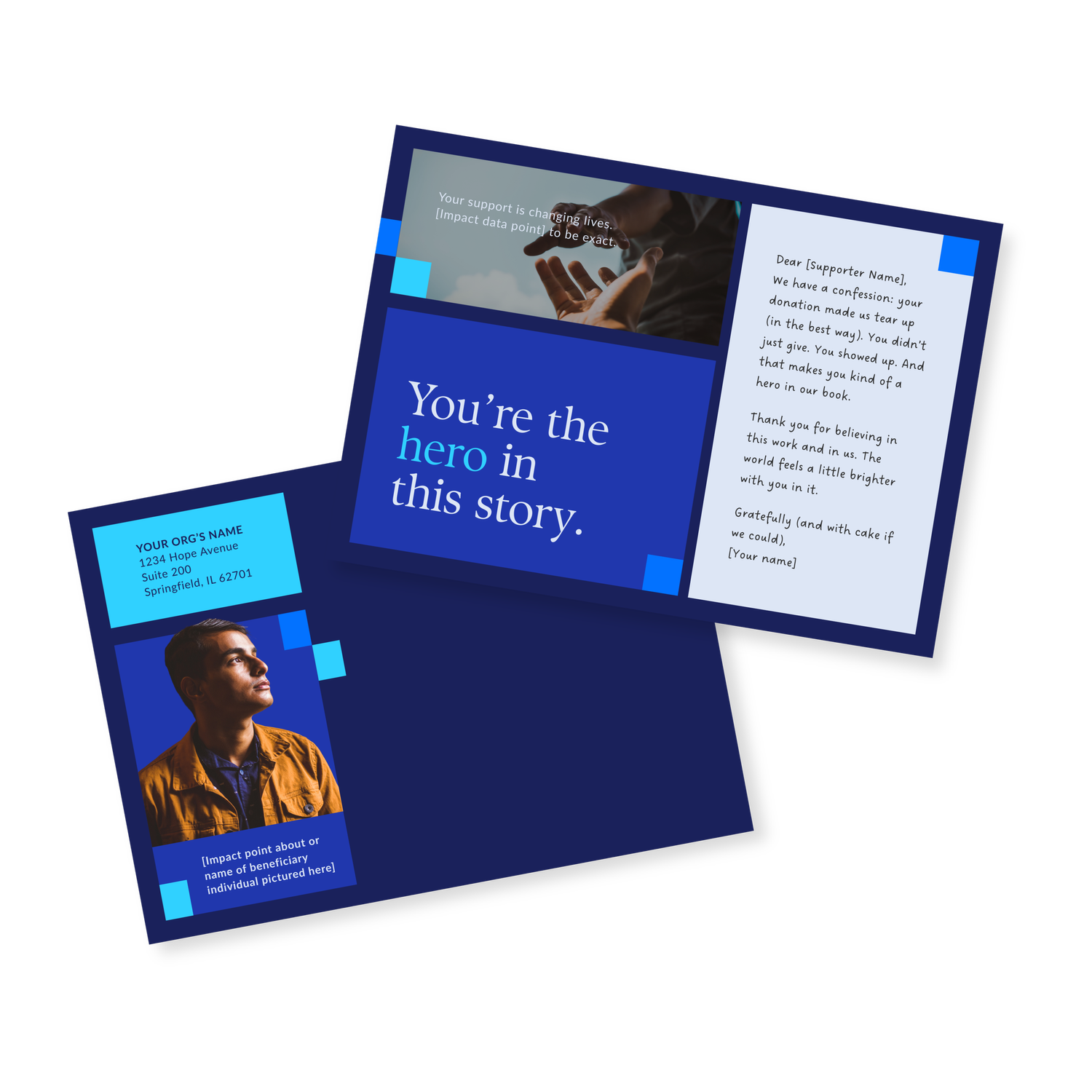If you work in nonprofit communications or fundraising, you’ve probably felt the shift: donors are more distracted, inboxes are noisier, and attention is stretched thin. But the root challenge isn’t that donors care less—it’s that nonprofits are asking donors to engage with materials that don’t always reflect the depth of their mission.
Visual storytelling is what carries your meaning forward.
It shapes how donors feel, interpret, and trust what you share.
During busy seasons, especially, nonprofits can benefit from rethinking their year-end fundraising through cleaner, more intentional design decisions—the kind that help donors move from uncertain to 100% confidence they want to support your work.
The takeaway is simple:
Donors read with their eyes first.
Design shapes whether they keep reading at all.
Donor Engagement Begins With What Donors Feel, Not What They Read (Why Visuals Matter Most)
Donor engagement starts long before a donor reads anything. It begins with the emotional impression your visuals make in a few seconds.
Design signals:
- whether you are trustworthy
- whether you are organized
- whether your mission feels human
- whether donors feel invited into purpose, or left in confusion
Most nonprofits underestimate this moment.
Visual consistency builds credibility and a visual mess breaks it.
This is why clean, intentional visuals matter so much during campaigns—urgency speaks differently when the design feels emotionally steady rather than frantic.
Impact storytelling also requires emotional integrity. There’s a clear difference between authentic narrative and manipulation, which is why ethical emotional engagement remains a core principle in design-led donor communication, espeically here at Acton Circle. Donors can immediately sense when a story honors their intelligence, versus when it tries too hard.
In short: design creates emotional permission for donors to stay with you.
The Visual Elements That Build Donor Belief (and Improve Nonprofit Donor Engagement)
When design is treated as an extension of your mission (not a decorative layer) it becomes a structured system for building donor trust.
Here are the elements that influence engagement most.
1. Consistency: The Everyday Trust Signal Donors Rely On
When your thank-you card doesn’t resemble your one-pager, and your social graphics don’t resemble your website, donors feel a disconnect. Inconsistent visuals quietly tell supporters your internal world is fragmented.
A cohesive visual identity—the kind that makes you look like an expert in your field—gives donors a clear sense of who you are.
2. Clear, Editorial-Quality Layouts Improve Donor Understanding
Donors shouldn’t have to dig through dense paragraphs or walls of text to understand why your work is important and its outcomes.
Thoughtful hierarchy, spacing, and simplicity help donors absorb your message more quickly. This is especially important when communicating outcomes or complex metrics, and the more you simplify your nonprofit’s social impact data, the more accessible your story becomes.
Design can turn overwhelming information into something trustworthy and digestible. Your approach in measuring and sharing your nonprofit’s impact illustrates just how much understanding influences donor confidence.
3. Emotion-Forward Visual Storytelling Deepens Connection
Visual storytelling is what humanizes your work. Donors connect more deeply when stories are framed with:
- real faces
- authentic photography
- meaningful quotes
- quiet breathing room
- thoughtful pacing
When making a case for support, emotion-forward design brings your information to life in a way donors instantly connect with. That same principle is what makes creating a powerful case for support through design-driven narrative so effective.
4. Repurpose-Ready Design Systems Strengthen Engagement Over Time
Donor engagement improves when supporters see visually consistent, familiar messages across channels.
Templates, structured layouts, and a defined visual system make ongoing communication easier for your team—and clearer for your donors. It’s the foundation of steady, year-round connection, something reflected in your guidance on encouraging generous donors all year.
5. Accessible, Inclusive Design Builds Trust With Every Donor
Accessibility isn’t optional—it’s a reflection of your values.
Readable type, strong contrast, alt text, inclusive imagery, and clear hierarchy send a message:
We care about how our message is experienced, and who feels invited into it.
These choices deepen trust across all donor segments.
The Donor Touchpoints That Influence Engagement Most (and How Design Enhances Them)
Some donor touchpoints carry more weight (like thank-you messages, recognition moments, campaign launches) and design directly shapes how each is received.
Thoughtfully Designed Thank-You Moments
A donor thank-you experience sets the tone for the entire relationship.
When it’s warm, intentional, and visually personal, it strengthens retention and emotional connection.
Creating donor thank-you cards that truly resonate shows that even small touches leave a lasting impression.
Recognition That Feels Genuine, Not Generic
Donor recognition works best when it feels intimate rather than formulaic.
Visual approaches that function like love letters to your donors make appreciation feel heartfelt and human—the core of strong donor recognition ideas that speak louder than words.
Design-Led Fundraising Ideas
Nonprofits can borrow heavily from design thinking to create intuitive, modern fundraising campaigns. Clean visuals, emotional clarity, and intentional structure help donors feel oriented from the start.
Fundraising ideas inspired by great design highlight how a design mindset reduces confusion, improves readability, and makes your campaigns more intuitive to donors.
Campaigns That Balance Urgency With Emotional Grounding
Urgency works when donors feel supported with clear next steps, not pressured to act. During the giving season, what really engages donors during year-end campaigns often comes down to thoughtful pacing, emotional sincerity, and visuals that guide rather than demand.
Content That Honors the Donor’s Time
Donors aren’t looking for more emails, more graphics, or more updates. They’re asking for communication that helps them understand, not for more work.
You’ll keep donors engaged when your communication is to the point, well-paced, and thoughtfully simple.
5 Practical Ways to Improve Donor Engagement Through Design (High-Impact, Low-Lift)
These five upgrades strengthen donor trust, without requiring a full rebrand.
1. Redesign one high-visibility donor asset with intention
Choose the touchpoint donors interact with most: thank-you emails, case statements, or year-end appeals.
Why it matters: small design shifts send strong trust signals.
2. Build a small internal visual system
Create 2–3 reusable layouts, consistent colors, and a defined typography set.
Why it matters: consistency builds recognition and recognition fuels belief.
3. Turn your impact stories into visual experiences
Break long paragraphs into engaging, human-centered pieces: photos, quotes, callouts, icons.
Why it matters: donors skim and visuals help your meaning land faster.
4. Improve your thank-you experience
Bring warmth, humanity, and simplicity to your thank-you cards and emails.
Why it matters: gratitude is one of your strongest donor retention tools.

Donor Thank You Cards
Download the free pack to get 4 postcard designs (7x5in) with editable messages.
5. Repurpose one strong asset into multiple touchpoints
Your annual report, a blog post, or a case statement can generate weeks of donor-ready content.
Why it matters: repetition strengthens familiarity and familiarity builds belief.
FAQs About Nonprofit Donor Engagement
What improves donor engagement the most?
Donors connect more deeply when visuals feel organized, human, and intentional.
Does design really influence donor retention?
Yes. Design shapes emotion, trust, and comprehension long before messaging does.
Which donor touchpoint matters most?
Thank-you experiences. They’re small, personal moments that leave lasting emotional impressions.
How often should nonprofits engage donors?
More regularly than you think, but with steady, intentional visuals that don’t overwhelm.
Where should small teams begin?
Start with your most visible donor touchpoint and build a simple visual system around it.
Donor Engagement Is Built Through Visual Trust
Design is the first impression. It’s how donors interpret your mission, how they decide whether to trust you, and how they understand the impact you’re making.
When your visuals reflect the integrity of your work—warm, grounded, clear, human—donors don’t just understand your mission.
They believe in it. And belief is what keeps them close.











